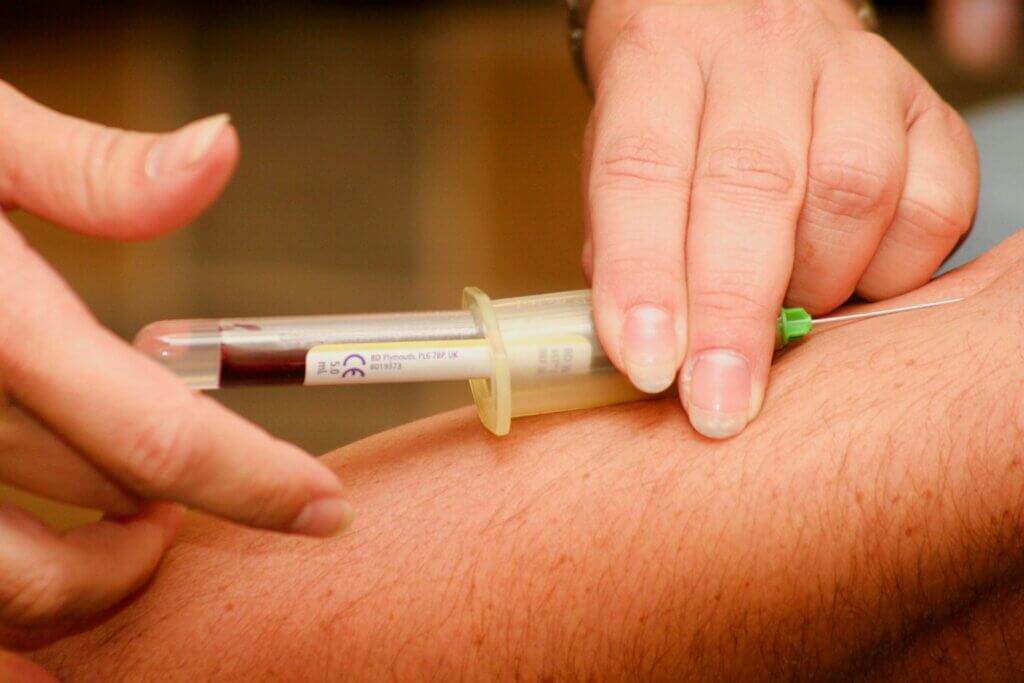Our blood can speak volumes about our health, if you know how to interpret it. Standard blood tests already provide windows into conditions like diabetes and anemia. Now, researchers are developing innovative techniques to reveal even more – including changes hidden deep in the brain that are associated with postpartum depression, as well as other psychiatric and neurological disorders.
A new study from Johns Hopkins Children’s Center brings scientists one step closer to decoding brain alterations through simple blood work. Published in Molecular Psychiatry, the research zeroes in on genetic clues that may unlock the biomarkers of mood disorders and more.
“Right now, there isn’t a blood marker for disorders affecting the brain,” explains Dr. Lena Smirnova, co-author and professor at Johns Hopkins Bloomberg School of Public Health, in a statement. “Essentially, these conditions are diagnosed by clinical interviews between patients and providers.”
But by analyzing genetic material in blood, researchers aim to detect shifts directly reflecting what’s happening in the brain – no invasive procedures necessary.

Following Cellular Breadcrumbs
The key lies in extracellular vesicles (EVs), tiny sacs released by cells to ferry information throughout the body. Every tissue generates EVs containing messenger RNA (mRNA), genetic molecules that help convey cell activities. Like a biological telegram service, EVs dispatch mRNA updates to distant sites.
“We only detected placenta-specific EVs during the pregnancy, and not after birth. This was a proof of concept, that we can detect EVs that are coming from a specific tissue or organ,” says senior author Dr. Sarven Sabunciyan, an assistant professor at Johns Hopkins University School of Medicine.
His team first confirmed they could pinpoint tissue-specific EVs by identifying mRNA exclusive to the placenta during pregnancy. This demonstrated that mRNA markers from distinct organs arrive in circulating blood – meaning they could potentially serve to report on distant cell happenings.
The researchers then grew miniature human brain tissues called organoids in the lab. Analyzing fluid around the organoids revealed brain-specific mRNA dispatched in EVs. Moreover, EV mRNA levels closely mirrored what was happening inside cells, confirming they represent suitable smoke signals.
“This is very exciting because right now there isn’t a blood marker for disorders affecting the brain,” notes Dr. Smirnova. Tracking brain EVs could provide exactly that.
Applying Technique To Other Brain Disorders
To determine ideal mRNAs to monitor, the team cross-referenced large genomic databases, discovering over 1,500 candidates selectively expressed in the brain. Many play roles in mood, addiction, schizophrenia and more – suggestive biomarkers.
Indeed, examining EVs in blood samples flagged 13 mRNAs significantly associated with postpartum depression, perhaps yielding insight into its biology.
“The goal is to develop a simple blood test to detect changes such as higher or lower levels of blood EV mRNAs directly linked to changes in the brain associated with mental disorders without having access to the brain itself,” remarks Dr. Sabunciyan.
Catching Conditions Early
Reliably identifying such mRNA shifts could allow earlier interventions for patients at risk of psychiatric crises or suicide. Though the current study examined only women’s blood samples, future work will clarify its utility in men.
The team also aims to develop similar diagnostics for autism spectrum disorder using organoids. Yet the possibilities span wide. As Dr. Smirnova explains, a myriad of brain conditions have no established biological markers that could be tapped into by monitoring extracellular vesicles. This novel approach promises to unveil many.
The study provides proof-of-concept that blood tests can spotlight disease processes hiding deep in inaccessible tissues – an unprecedented feat. Where standard screens illuminate the open pages of our health, emerging techniques like these shed light on the innermost chapters still waiting to be read. For doctors and patients alike, it’s shifting from judging a book by its cover to finally gaining insight into the contents within.



-392x250.jpg)








